If you’re considering welcoming a Blue Nose Pitbull into your home, knowing what to expect from them is half the battle. Despite the stereotypes that follow the Pitbull breed, the Blue Nose Pitbull is usually friendly and well-mannered and is one of the best scoring breeds in the American Temperament Test Society’s typical dog temperament tests. Blue Nose Pitbulls have an unfair reputation for being aggressive, and we’re here to correct that and share more correct information on the breed.
Breed Overview
| Height: | Weight: | Life Expectancy: | Look: |
|---|---|---|---|
| 17 to 21 inches | 50 to 65 pounds | 12 to 16 years | Dark to light gray nose, gray coat, silver or blue eyes. Some Blue Nose Pitbulls may have traditional American Pitbull Terrier colors, instead. |
(A Violent) History of the Blue Nose Pitbull
The history of the Blue Nose Pitbull isn’t a happy one. In the past, they’ve been used for everything from dog fights to bloodsport, often abused and left to experience the crueler parts of the world.
The ancestors of this breed came from England, UK, back in the 19th century. They were subject to the same treatment. It continued down the breed’s family line because the ring leaders in charge of these bloodsports flew the pups to America after it was made illegal in England. Larger Pitbulls were bred to create dogs that would be naturally bigger than the typical Pitbull. This breeding is what resulted in today’s American Pitbull Terrier.
Thankfully, American Pitbull Terriers are no longer used in awful situations like bloodsports or dog fighting and have been domesticated to become amazing family pets. The reputation this breed and its related dog breeds have is down to each Pitbull Terrier needing to fight to survive the lifestyle they used to be forced into. Now that such things have been outlawed, there’s no need for this kind, wonderful breed to be aggressive. They were never naturally aggressive, to begin with. They were forced to be like that.
No record tells us when the first Blue Nose Pitbulls came into existence, but they likely followed soon after the standard black-nosed Pitbull. There’s very little difference between the Blue Nose and Black Nose, just their coloration. Blue-nosed Pitbulls are known for being dark to light gray, and their nose shares that color. In some lights, their fur and nose can appear to have saturated blue undertones, but we’ll talk more about their appearance later.
What’s the Difference Between American Pit Bull Terriers and Blue Nose Pit Bulls?
The Blue Nose Pitbull belongs under the umbrella of the larger American Pitbull Terrier breed. The traditional American Pitbull breed was initially bred for hunting, baiting, and fighting. They are banned in many parts of the world today due to their instinctual fighting nature. Blue Nose Pitbulls don’t share this instinctual nature that has been bred into American Pitbulls.
As well to their temperature difference, Blue Nose Pitbulls have different colorations. However, it’s not always so easy to tell the two breeds apart because some Blue Nose Pitbulls end up with the same range of fur, nose, and eye colors as the traditional American Pitbull. The Blue Nose Pitbull is a rare variety of the American Pitbull, they are bred from a recessive gene that causes their gray fur and nose. They are the same breed as the Red Nose Pitbull, albeit with a slightly different genetic code, giving them their distinctive coats.
The Red and Blue Nose Pitbulls fall under the American Pitbull breed until the American Kennel Club lists them as their unique breed – which can happen any time because the AKC is always looking to expand their breed list the requirements for each breed they recognize. At this time, it is not a separate breed. It should be noted that the AKC doesn’t allow the registration of American Pitbulls at this time.
Breed Appearance
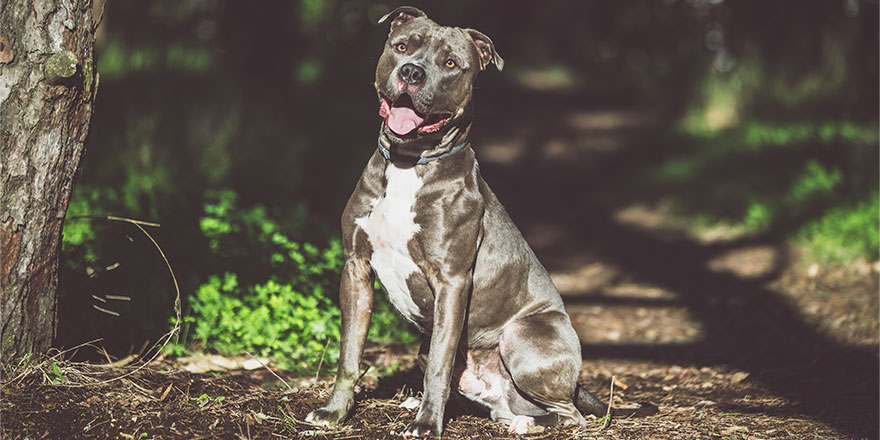
We’ve spoken a little bit about the appearance of this dog breed, but let’s go into more depth about why the Blue Nose Pitbull is called a “Blue” Nose Pitbull. The dog doesn’t have a blue nose or a blue coat, so why does it carry such a name?
Blue Nose Pitbull puppies are gray or silver, with their nose holding the same shade as their fur, instead of the traditional black color that other dogs of the American Pitbull breed usually have. When “blue” is used as a descriptive term for pets like cats and dogs, it usually means a diluted black or a black or gray with a saturated blue undertone. It doesn’t ever refer to bright blue noses or dog breeds with royal blue fur.
Blue Nose Pitbulls, as they grow from puppy to an adult, may end up being anything from dark to light gray. You may also have a Blue Nose Pitbull that carries the recessive gene to be a Blue-nosed Pitbull, but they may be cream, brown, black, or any other standard color variation from the American Pitbull dog breed.
With their silvery-gray eyes, this not-blue dog has a somewhat otherworldly look. A wide grin frames their square nose, and their tail is long and thin, always pointing upwards. They’re a stocky and large dog, weighing anywhere from 50 to 65 pounds during adulthood and standing between 17 and 21 inches. You’ll have an athletic pooch on your hands, one with a short coat that’s easy to care for when they decide to get muddy.
Regarding dog shows and the like, the only colored Pitbull that is not accepted is a Pitbull with Merle coloring. Merle is not a true Pitbull color, which means that you likely have a cross-breed dog and not an actual Pitbull. Some breeders will try to convince buyers that a merle-colored Pitbull is a rare find, and they’ll charge a pretty penny for them, but they aren’t full Pitbulls.
Blue Nose Pitbulls Fun Facts
Here are some of our favorite fun and interesting facts about the Blue Nose Pit Bull dog breed:
- A Blue Nose Pitbull doesn’t have a blue-colored nose. They’re usually some shade of gray, though they may appear to have blue undertones.
- This breed’s nose, fur, and eye color come from a recessive gene.
- The breed is an American Pitbull. They aren’t registered as their breed with the AKC but are often considered a variation of the American Pitbull breed.
- They require high activity levels and can quickly become bored if they aren’t entertained!
- A well-socialized Pitbull is extremely loyal to their human family and will get along with other pets.
- They are incredibly easy to train.
- Blue Nose pits prefer people to other dogs.
- They are not recognized by the American Kennel Club (AKC) as their breed.
- These Pitbull dogs love to jump!
- They’re strangely susceptible to the cold.
- Just because you breed Blue Nose Pitbulls together doesn’t mean you’ll end up with a litter of Blue Pitbulls.
10 Reasons Why Blue Nose Pitbulls Make Great Pets
Looking for more reasons to buy or adopt a Blue Nose Pitbull over other dog breeds? We’ve got you covered. Check out our list of 10 reasons why Blue Nose Pitbulls make the best pets.
- Blue Nose Pitties are incredibly friendly, much more so than other Pit bulls.
- They are very loyal and made good guard dogs.
- When properly socialized, most Pit Bulls have no issues with other dogs, so you can take them to the dog park without worrying about holding you back.
- They’re the furthest thing from an aggressive dog possible.
- Their grey coat looks silver or may have a blue undertone, making them look very pretty.
- They make excellent therapy dogs for dog lovers with conditions like anxiety.
- They are typically a healthy breed with few health concerns.
- Blue Nosed Pitbulls can be trained to be working dogs. Historically, they were used as a herding breed. Put all that muscle to good use!
- Other Pitbulls aren’t as friendly as this breed, even though the breed only exists because of recessive genes.
- They are naturally loyal and will be very protective of you and your children.
The Personality of the Blue Nose Pit Bull
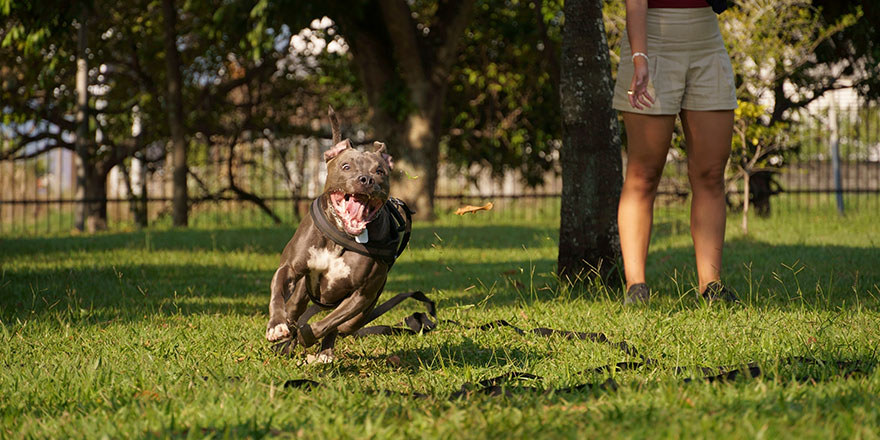
Sociability
The Blue Nose Pitbull is generally much more friendly around people than other dogs, though they can be trained to behave around other pets in a household. It’s all down to proper socialization! It’s the same with any dog breed – if you don’t properly socialize your dog from a young age, they’re going to have a wealth of issues with other dogs, cats, people, and any living thing they come into contact with.
This breed is better suited for a solo housepet, and they do prefer to be the only pet in the house, but – as we said – if you socialize them, they can be housed with other pets. They aren’t aggressive, but they can be possessive and may exhibit dominating behaviors towards other pets in your home if you don’t train them to accept living with others.
While this breed is excellent with children, it is always recommended that the children and the dog are given time to get to know each other before they share a space. They should never be left unsupervised because that’s just a recipe for disaster with dogs and kids. Remember to also teach your children to respect the boundaries of your Blue Nose Pitbull and to look for signs that they want to be left alone. Even the friendliest dog has its limits.
Energy levels and keeping your dog entertained
These dogs are energetic and need at least 60 minutes of exercise daily. This can be through walks, visits to the dog park, playtime in your backyard, or even a few games of fetch. You can count any physical activity as exercise when it comes to dogs.
Without an outlet for their energy, your Blue Nose will become destructive. If your dog is tearing up your furniture and pillows or wrecking your home, they aren’t expending enough energy during the day to feel satisfied.
Beyond physical exercise, you will also need to provide your pup with some mental stimulation. Stock a doggy toy box with some good interactive toys, including a few indestructible dog toys.
They are likely if you’re bored of the same day-in, day-out with your dog. Why not build an obstacle course in your yard or train them in some skills? If your pup is particularly problematic, consider obedience training.
Intelligence
Blue Nose Pitbulls are highly intelligent, making them great train dogs. If this is your first pup, you may feel like a fish out of water when figuring out how to train your dog. There are plenty of great dog trainers out there, and there are likely several trainers local to you that have classes that will fit your schedule.
Do Blue Noses Pitbulls like water?
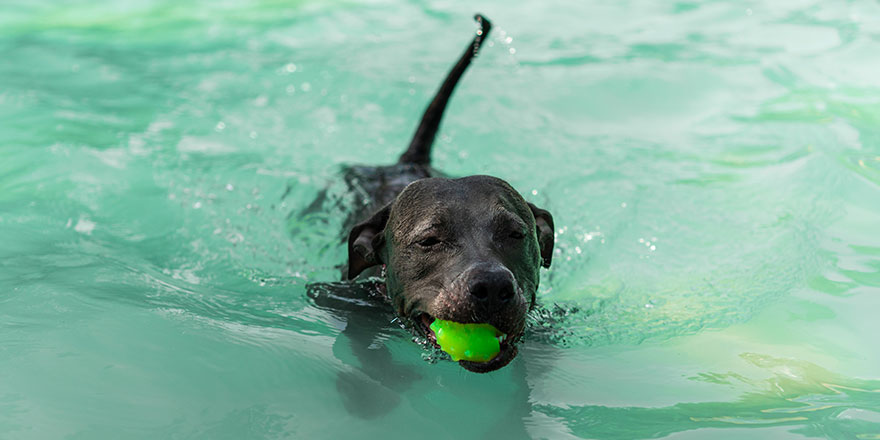
Although Blue Nose Pitbulls like water and are capable of swimming, swimming is more difficult for them than it is for other breeds of dogs. This is because the breed has such as stocky build. They’re heavy and not exactly streamlined. If you’re worried about letting your Pitbull go for a swim in a body of water, consider buying them a doggy life vest with a handle on the back to ensure that you can lift them out of the water in a hurry if you need to.
Alternatively, your pup may enjoy swimming in deeper waters, such as playing in shallow streams, running through a water sprinkler in your garden, or swimming in a children’s paddling pool.
Potential Health Problems of a Blue Nose Pitbull
Though they are generally fit and well, some health problems come with a dog being a part of the Pitbull breed, and a few more can occur because of the recessive gene that makes a Pitbull into a Blue Nose variant. This list contains the most common health problems associated with the American Pitbull breed and the Blue Nose variant:
- Alopecia: A hair loss condition is common in all Pitbull breeds due to their underactive thyroid. When a Pitbull has an underactive thyroid (hypothyroidism), they may also experience skin allergies, sensitive skin, weight gain, and may exhibit aggressive behavior. This is because an underactive thyroid affects everything from your dog’s metabolism to their mental functions and energy levels due to the lower levels of thyroid hormone production that their body is experiencing.
Alopecia can develop anywhere there is hair or fur on your dog’s body, including their eyelashes. Your pup may experience thinning hair or may lose patches of fur. This typically happens over time. - Deafness: This condition is unique to the Blue Nose Pit Bull because the recessive gene that causes their coloring gives them low melanin levels. In dogs, low melanin levels can affect the immune and nervous systems, causing various dysfunctions like deafness. Your Blue Nose Pitbull may not be deaf from birth, and not all Blue Nose breed variants will experience deafness.
To figure out whether your dog is deaf or not, look for signs of apathy, increased sleepiness, tilting of the head, and excessive barking. They may also ignore verbal commands and stop responding to noises they would have responded to before (such as the doorbell). - Dermatitis and other skin conditions: Though it’s possible that your Pitbull is experiencing skin conditions because of an underactive thyroid, they don’t need to have a diagnosis of hypothyroidism to have sensitive skin. Dermatitis causes dry, itchy skin on your dog, which can be hard to see on dogs with thicker coats. Thankfully, Pitbulls are short-haired dogs, so you’ll be able to locate and treat patches of dry skin with ease. Treat their skin properly, and their coat health will follow suit.
- Heart disease: Heart disease is a common health issue in Pitbulls and isn’t limited to Blue Noses. Overweight dogs are much more likely to develop this condition, so it’s important to keep your dog on a high-quality diet suitable for their breed type and weight. If your vet tells you your dog needs to lose weight, you should listen to them!
- Hip dysplasia and other joint issues: Joint issues are a standard problem with many dogs today, and the problem often lies in their genetics. After years of breeding dogs to the standard human desire, many have developed joint issues like hip dysplasia, which can be incredibly painful for your pup. This condition is treatable, but it’s crucial that you take notice of any changes in your dog’s stance or gait because that will be the first indication that something is wrong with their hips or legs.
- Vision problems: Like deafness, vision problems result from the low melanin levels in a Blue Nose Pitbull. Other Pitbulls may not suffer from poor vision, but low melanin can cause many health issues affecting the body’s functions.
Poor breeding, such as that which often occurs through the operations of backyard breeders, can result in poor health quality in dogs. Backyard breeders will often go to any lengths to secure more money through the suffering of the dogs they own, including overbreeding and even coloring or lying about the true color of a dog. It’s rare to find a healthy dog from a backyard breeder, and it’s truly an awful practice that needs to be shut down.
What About Blue Nose’s Nutrition?
A balanced diet is extremely important for owning and caring for a Blue Nose Pitbull. High-quality, nutritious food can go a long way to preventing some of their common health issues. For example, dog food with added joint support supplements would be perfect for a Pitbull because they’re so often prone to experiencing joint pain.
But it’s not enough to just choose a dog food that is good quality. Pitbulls use a lot of energy and muscle, so they can burn up to 1,800 calories a day if they’re highly active.
See our round-up of Best Dog Food for Pitbulls for a complete list of our favorite options.
Fully grown dogs should have around 3 cups of kibble daily, spread over the day. It’s important not to put all of a dog’s food down at once because dogs like Pitbulls are prone to overeating and gaining weight fast. The last thing you want is to be the cause of your dog’s heart problems.
Puppies naturally need less food, but their hunger can quickly grow. For this reason, we recommend free-feeding your dog until they are around six months old. However, if your puppy seems to be eating too much, you may consider buying a special feeding bowl that forces a dog to slow down by making them work to get their kibble pieces.
Are Blue Nose Pitbulls Easy to Train?
Blue Nose Pitbulls are easy to train thanks to their high intelligence and friendliness. The more they bond with you as their owner, the more they’ll listen to you. But it’s not enough to have a good bond with your dog, they also need socialized to become model citizens.
If you’re having trouble training your dog at home or don’t have the experience to train them, look up local dog trainers and sign up your pup for some classes in which you can be involved. These classes will also allow your dog to be around other animals in a safe, controlled environment.
Some dog owners also crate-train their Pitbulls because crate training can benefit some dogs. Dogs that are anxious or have destructive behaviors may appreciate a quiet space that is all their own. Remember that an indoor crate should be comfortable, have blankets and pillows, and hold some of your dog’s comfort toys. They should also have access to food and water inside the crate, which shouldn’t be locked unless you have an extremely good reason to shut the door.
How to Groom a Blue Nose?
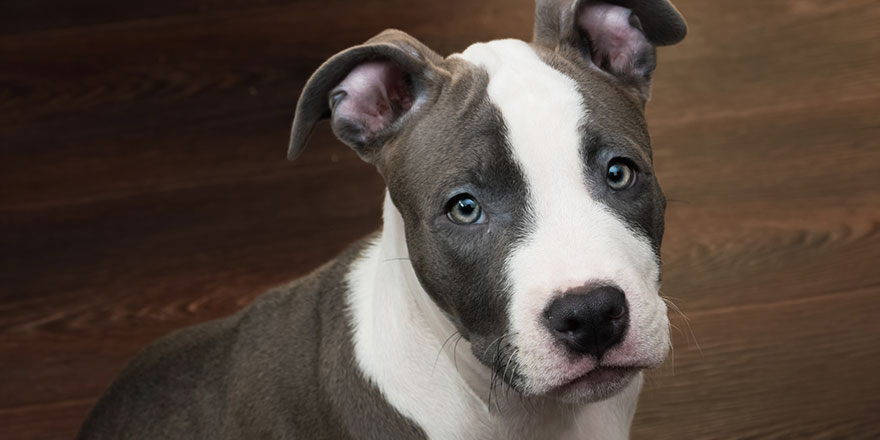
The Blue Nose Pitbull is very easy to groom. They have a short, close-cut coat that requires little to no brushing and don’t often require frequent baths unless they’ve gotten dirty. Although, all Pitbull breeds are prone to problems with their skin, which can mean that they need a little more care and cleaning. Because of this, it’s usually a good idea to give your dog a once over a few times a week, so you can stop problems as early as possible and before they progress. That doesn’t mean you need to give them a full bath, but check over their coat and look for patches of dry skin to treat with appropriate creams and ointments.
As with all dogs, your Blue Nose Pitbull should also have their ears checked regularly for signs of the wax build-up to avoid infections. Similarly, a trained professional should check their claws regularly and trim them if you feel they are getting too long. Some dog owners are comfortable trimming their own dog’s nails, some aren’t. If you’re new to owning a dog, we recommend booking your dog a grooming appointment and asking a groomer to show you how to properly trim your pup’s nails. We don’t want to scare you, but if you trim them wrong, you could cause your dog to bleed. A dog’s nails, just like a cat’s nails, aren’t anything like human nails. Consider their nail to be your finger down to the first knuckle. Only a small bit needs to be trimmed to keep their nails healthy.
As for baths, once a month should be fine unless your dog has any skin conditions where a vet has recommended more frequent baths and given you a medicated doggy shampoo to use.
How to Socialize Blue Nose Pitbull Puppies
Socializing Blue Nose Pitbull puppies isn’t any different from socializing puppies from other breeds. Your puppy’s socialization will have begun before they even come to live with you because it starts from the moment they are born. The first three months of a puppy’s life will shape their personality, which makes those months the prime time to introduce them to other animals and humans.
Gentle handling encourages a puppy to develop into a kind, friendly dog. They’ll be more confident if their owner is patient with them and doesn’t tell them off for every little thing. Without socialization, a puppy will grow into a dog that relies on its innate instincts to keep itself safe. They’ll be anxious, unsure, and maybe even aggressive.
Introduce your puppy to new sights, sounds, and smells. The world is new and strange, but you must teach your puppy that they don’t need to be scared of new things or people. Let them walk over new surfaces, eat different puppy-safe treats, and meet people of different ages.
Make every experience as positive as possible, and be sure to complete the experiences in an area your puppy is familiar with so that they feel safe. Give them praise, pets, and treats! Remember to involve your family to ensure your puppy gets used to them, too.
Don’t try to get your puppy involved too much too fast. They may get overwhelmed. Take it slow and keep it at home for a couple of weeks before you try taking them outdoors for new challenges.
If you’re planning on training your dog to be a guard dog or other type of working dog, you should also start this training when they’re young.
Adopt Don’t Shop
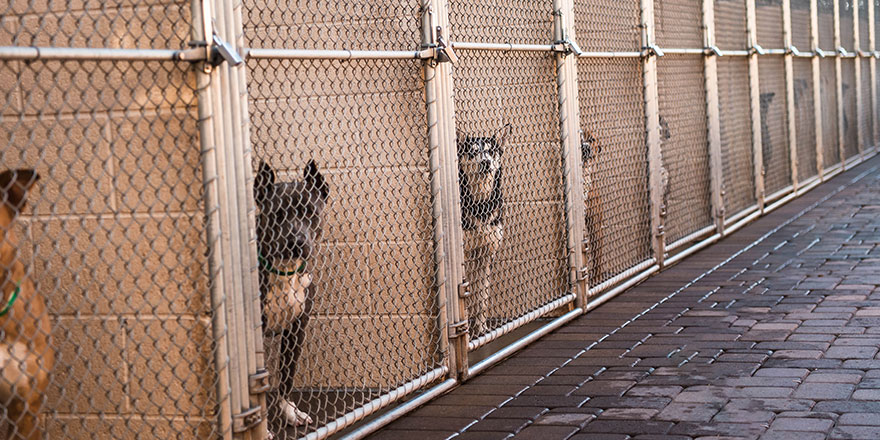
As one of the many bully breeds worldwide, American Pitbulls are easy to find in shelters. Pitbulls have a bad reputation, which leads to many dog owners giving up on them quickly instead of trying to train them.
You’re less likely to find a Blue Nose in a shelter because they’re a rare and expensive breed variant, thanks to their “blue” coloring. That’s not to say that you definitely won’t find one, though, and it’s worth looking, just in case. Your best chance is to locate a Pitbull shelter and see if any dogs match the appearance characteristics of a Blue Nose.
Unfortunately, because the American Kennel Club does not recognize Pitbulls, we cannot use them as a reputable source of information for Pitbull shelters and breeders – simply because there isn’t any information like that on their site.
A note on breed bans and the AKC
The AKC does not recognize the Blue Nose Pitbull or American Pitbull. But the American Dog Breeders Association does recognize Pitbulls. Part of the reason the AKC doesn’t recognize the breed is that it has characteristics banned in several places in America. Breed Specific Legislation has banned around 75 different breeds of dog in the U.S., with over 700 cities enacting the legislation, which has affected thousands of dogs across the country even though it’s incredibly expensive to communities and provides a false sense of security.
Because of the ban on these “dangerous” characteristics, the AKC will not show any information regarding Pitbulls, even though they’re recognized in many other places. You cannot enter a Pitbull in AKC shows or register a Pitbull with them. There’s also little to no information on the breed through the AKC.
Similar dogs that the AKC does recognize are the Staffordshire Bull Terrier and the American Bulldog.
Price
If you’re looking for a Blue Nose Pitbull Puppy from a reputable breeder, you could pay anywhere from $1000 to $3000. Because of their “blue” coat and nose, they’re considered a rare variant of the American Pit Bull Terrier breed, which makes them very desirable. Who wouldn’t want a “blue” Pit Bull, after all?
Do remember that you won’t get an actual blue puppy, though. But you might be lucky to find a Blue Nose with silver eyes or a unique nose color! The price will certainly go up with more unique traits in healthy dogs. If the puppy has a black or brown nose, it’s not a true Blue Nose Pitbull, but it may still have the recessive genes in its genetics to create a Blue Nose puppy.
FAQs:
The major difference, as we're sure you've gathered from their names, is the nose color of each breed. While Blue Nose Pitbulls have a gray-colored nose, Red Nose Pitbulls usually have a red or pink-colored nose. The fur of the breed usually matches their nose or is in the same color family. For example, a Red Nose has red or auburn fur, while a Blue Nose will be gray or silver.
Blue Nose Pitbulls are one of the friendliest Pitbulls that you can have in your home, as long as they don't feel like their place in your home is being threatened. You should have no issues taking them to dog parks or walking them in public.
Blue Fawn is probably the rarest Pitbull color out there. For a pup to inherit this color from their parents, they must have gained the homozygous recessive gene from both their mother and father. Blue Fawn Pitbulls have a silver-blue coat and a red nose, usually with silver-toned eyes. In a way, they almost look like a mix of the Blue and Red Nose Pitbull variants.
Blue Nose Pitbulls rarely bark, which some people think makes them a bad choice for a guard dog. But if you put in the training, they'll bark when they need to, they just aren't a dog that barks excessively.
Blue Nose Pitbulls are illegal in some places in America, as are all breeds of Pitbull. All military bases in the U.S. have banned Pitbulls, and the following states won't welcome your dog: Iowa, Kansas, Ohio, Missouri, Wisconsin, Mississippi, Arkansas, Michigan, Louisiana, and Kentucky. Check for Breed Specific Legislation in your state to find out more.






